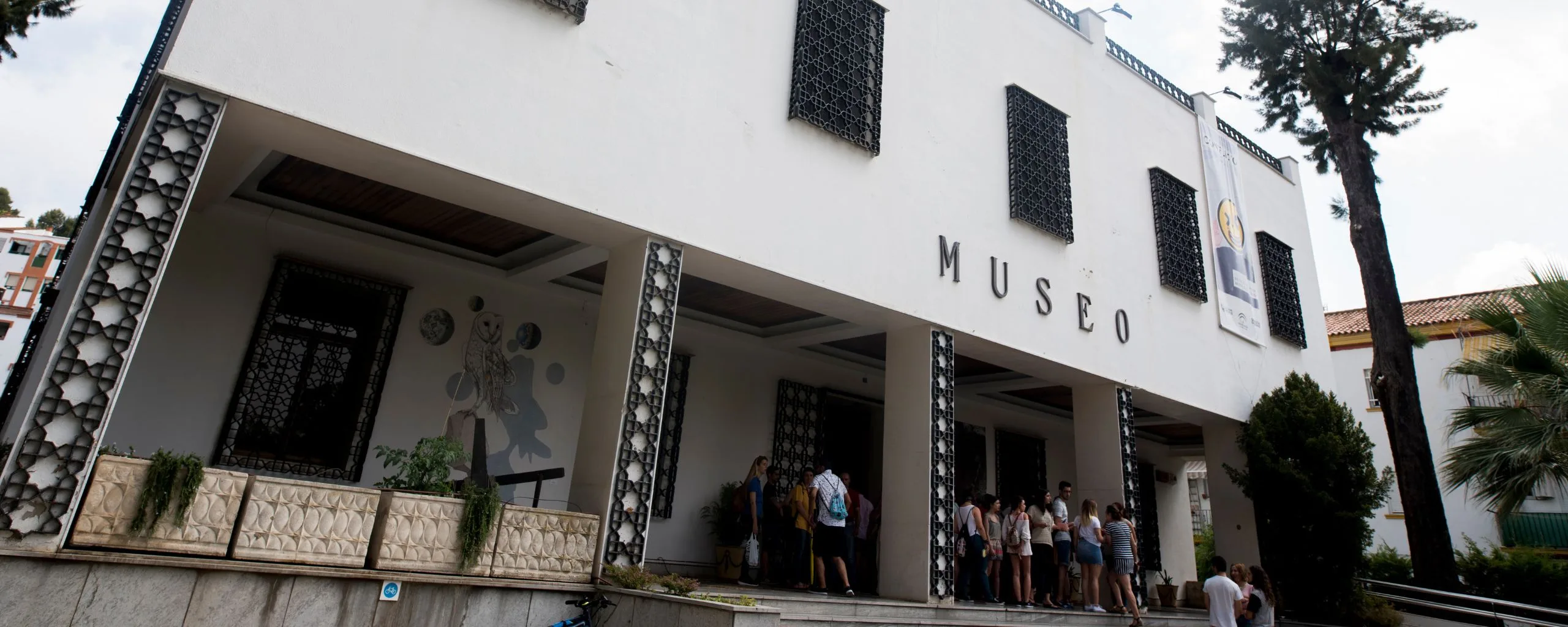The Museum of Huelva is located in the Alameda Sundheim, one of the most emblematic avenues of the city, configured as a winter promenade and residence of the high bourgeoisie in the first decades of the 20th century. The Museum was inaugurated in 1973, providing the city with a cultural space where archaeological finds from prehistoric times in Huelva’s territory to the latest artistic manifestations in the 20th century, such as works by Daniel Vázquez Díaz or José Caballero, are exhibited.
The building of the Museum of Huelva was designed by the Sevillian architect Lorenzo Martín Nieto, who was also responsible for the restoration of the hermitage of San Pedro and the Museum of Popular Arts and Customs in Aracena. The building is harmonious and very much in the Andalusian style, with hints of Mudejarism in the ironwork and a garden entrance which, according to the theories of the time, would be a screen of vegetation to isolate the building and the works it contains.
The museum consists of three floors and a semi-basement divided into two main sections: Archaeology and Fine Arts.
The most visited and best known room in the Museum is the permanent archaeology room where, in clearly differentiated chronological blocks, archaeological remains from the Palaeolithic and Neolithic periods through the Bronze Age to the finds from the Cabezo de La Joya and the Cabezo de San Pedro are displayed.
The museum consists of three floors and a semi-basement divided into two main sections: Archaeology and Fine Arts.
The most visited and best known room in the Museum is the permanent archaeology room where, in clearly differentiated chronological blocks, archaeological remains from the Palaeolithic and Neolithic periods through the Bronze Age to the finds from the Cabezo de La Joya and the Cabezo de San Pedro are displayed.
The Tartessian archaeological sites, entitled “Tartessos, del mito a la realidad” (Tartessos, from myth to reality), are of particular importance in this room. They provide a journey through Tartessian Andalusia and other contemporary civilisations that were also on our coasts, such as the Phoenicians and Greeks. This ground floor presents, from the Roman period, what is known as the NORIA DE RIO TINTO, which opens up a new archaeological period within the Museum.

On the first floor are the exhibition rooms dedicated to Fine Arts, one of which is the permanent exhibition room with works ranging from the 13th century to works dating from 1992, both in sculpture and painting.
The second floor is dedicated to internal services, while the semi-basement houses the maintenance and storage areas for archaeological remains.
Closed 1 and 6 January, 1 May and 24, 25 and 31 December.
Alameda Sundheim, 13, 21003 Huelva